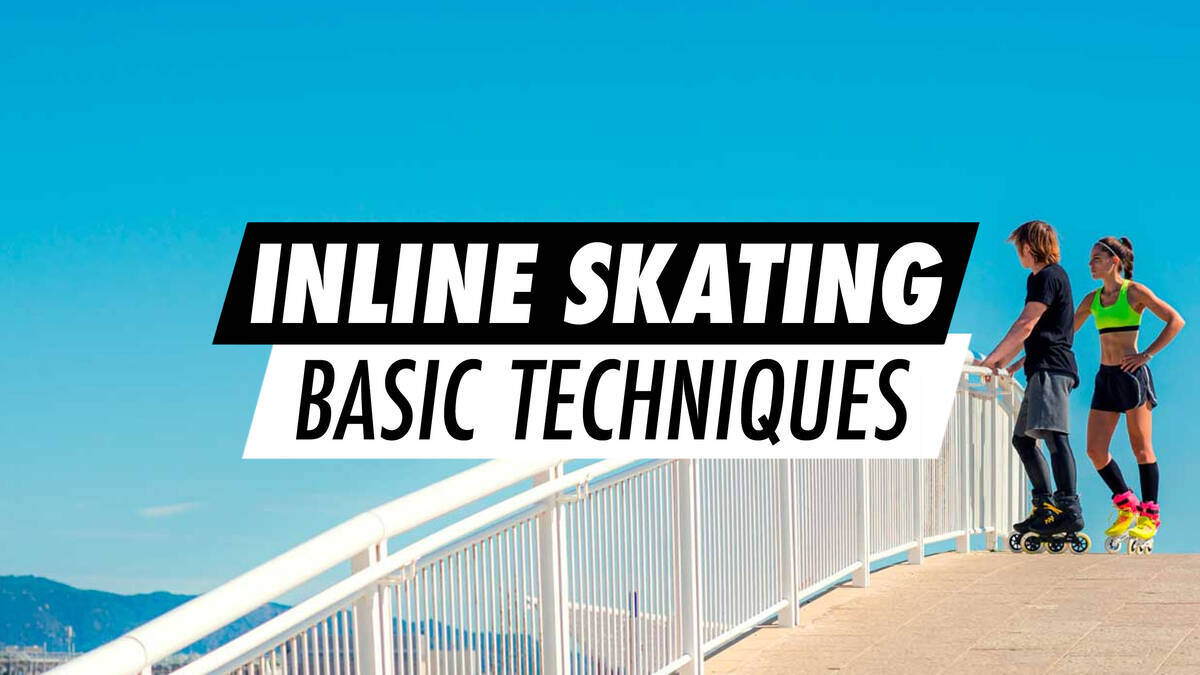Inline Skating - Basic Techniques

Mastering the proper technique in inline skating involves establishing a stable posture, learning braking methods, executing smooth turns, and managing falls safely. This guide will furnish beginners with all the essentials regarding inline skating technique.
Inline skating caters to everyone—whether large or small, young or elderly. All you require is a pair of inline skates, some protective equipment, and a smooth, traffic-free area to begin practicing. Although the initial learning process may appear challenging, noticeable improvement comes within a few hours, so perseverance is key!
Overview
Correct Posture on Inline skates
Achieving the correct posture involves bending your knees while on inline skates, bringing you closer to the ground and facilitating balance.
Ensure your feet remain parallel, positioned straight ahead and not angled inwards or outwards.
Maintain a stable, balanced stance with knees bent, feet parallel, and a slight forward-leaning upper body.
Watch our tutorial video, How to Skate on Inline skates:
Braking Techniques on Inline skates
To stop effectively on inline skates, one can either employ the brake pad or utilise the T-stop technique.
Employing the Brake pad
For braking with the brake pad, extend the skate equipped with the pad forward and lift your toes until the brake pad makes contact with the ground, enabling a slowdown. The brake pad facilitates controlled speed adjustments or can be utilised to completely halt. Beginners should become familiar with using the brake pad for maximum control.
T-Stop Method
The T-stop method requires positioning one foot behind and dragging the wheels along the ground perpendicular to the other foot, forming a T. Drag the wheels to achieve a complete stop. This method demands balancing on one foot while moving.
T-stops permit braking using the wheels alone, dispensing with the necessity of a brake pad, which can sometimes obstruct. Novices would benefit from learning the T-stop to improve control over their inline skating experience.
Both methods are detailed in our video tutorial, How to Stop on Inline skates:
Executing Turns on Inline skates
When performing turns, maintain a slight forward lean with bent knees. For a left turn, advance your left foot subtly, and reverse this for a right turn. Transfer your weight towards your desired turn direction, leaning into the curve with your upper body while looking in the direction of your turn to assist significantly.
Focusing on your turning technique aids in avoiding frequent beginner errors and is beneficial when learning the cross-over turn, an advanced move you will encounter as you progress.
Safely Falling on Inline skates
Opting to fall forwards allows for better control and prevents hitting the ground with the back of your head or tailbone.
Should you need to regain balance on inline skates, proceed as follows:
- Crouch and lean forwards—being close to the ground reduces impact, potentially helping you regain control.
- Utilise protective gear to absorb impact—fall onto your knee, elbow, or wrist pads to shield yourself from harm. If you are moving swiftly as you fall, attempt to slide on your protectors to avoid scrapes.
These techniques minimise potential injuries, ensuring continued progress with inline skating.
Selecting the Optimal Inline skates for Learning
Both novice and experienced skaters should choose inline skates that offer a snug fit and maximum comfort. Beginner inline skates ought to include a heel brake and provide excellent ankle support. The wheels should possess a softness (76A - 84A) and relatively modest size—84 mm or less for adults with large feet, while children should use wheels under 70 mm.
For more insights, consult our guides on purchasing inline skates:
